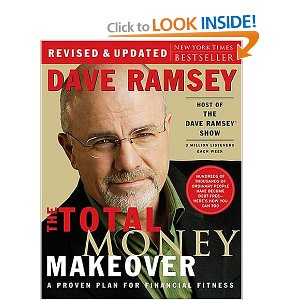
I read Dave Ramsey’s Total Money Makeover several years ago and would strongly recommend you purchase it. In addition to Mr. Ramsey’s explanations for how much you are actually paying in interest, waking you up regarding your purchases, this book got me completely out of debt. It is such a genius plan because you see results very quickly. Here it is in a nutshell.
Get Out of Debt with the Debt Snowball Plan
Truth: You should pay off the smallest debt first to create the greatest momentum in your debt snowball.
The math seems to lean more toward paying the highest interest debts first, but what I have learned is that personal finance is 20% head knowledge and 80% behavior.You need some quick wins in order to stay pumped enough to get out of debt completely. When you start knocking off the easier debts, you will start tosee results and you will start to win in debt reduction.
Debt Snowball Plan
The principle is to stop everything except minimum payments and focus on one thing at a time. Otherwise, nothing gets accomplished because all your effort is diluted. First accumulate $1,000 cash as an emergency fund. Then begin intensely getting rid of all debt (except the house) using my debt snowball plan. List your debts in order with the smallest payoff or balance first. Do not be concerned with interest rates or terms unless two debts have similar payoffs, then list the higher interest rate debt first. Paying the little debts off first gives you quick feedback, and you are more likely to stay with the plan.
Build Momentum
Redo this each time you pay off a debt, so you can see how close you are getting to freedom. Keep the old papers to wallpaper the bathroom in your new debt-free house. The New Payment is found by adding all the payments on the debts listed above that item to the payment you are working on, so you have compounding payments which will get you out of debt very quickly. Payments Remaining is the number of payments remaining when you get down the snowball to that item. Cumulative Payments is the total payments needed, including the snowball, to pay off that item. In other words, this is your running total for Payments Remaining.
Debt Free!
You attack the smallest debt first, still maintaining minimum payments on everything else. Do what is necessary to focus your attention. Keep stepping up to the next larger bill. After the credit debt is taken care of, you are ready for the next Baby Step in your Total Money Makeover.
I have been broke. I know how scared I felt, and I know how fast I wanted to get out of debt. I know how you feel, and I have learned that what really works is unbelievably fierce, focused intensity.






